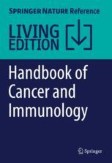Search
Search Results
-
A Review on Metal Ion Sensors Derived from Chalcone Precursor
Disclosure of new molecular probes as chromogenic and fluorogenic cation sensors is scientifically exigent work. Recently chalcone derivatives gained...

-
Luminous Insights: Exploring Organic Fluorescent “Turn-On” Chemosensors for Metal-Ion (Cu+2, Al+3, Zn+2, Fe+3) Detection
There are several metal ions that are vital for the growth of the environmental field as well as for the biological field but only up to the maximum...

-
Hazard Assessment of Benchmark Metal-Based Nanomaterials Through a Set of In Vitro Genotoxicity Assays
For safety assessment of nanomaterials (NMs), in vitro genotoxicity data based on well-designed experiments is required. Metal-based NMs are amongst...
-
Nano-mediated Strategies for Metal Ion–Induced Neurodegenerative Disorders: Focus on Alzheimer’s and Parkinson’s Diseases
Purpose of ReviewWhat accounts for the low success rate of the treatment against neurodegenerative disorders (ND) is the inability of the neurons to...

-
Role of Metal-Doped Carbon Dots in Bioimaging and Cancer Therapy
Carbon dots (CDs) have gained enormous attention in the class of carbon-based nanomaterials due to their outstanding features, including ultra-small...
-
Developmental exposure window influences silver toxicity but does not affect the susceptibility to subsequent exposures in zebrafish embryos
Silver is a non-essential, toxic metal widespread in freshwaters and capable of causing adverse effects to wildlife. Its toxic effects have been...

-
Map** a Link Between Mercury Toxicity and Alzheimer’s Disease
Alzheimer’s disease (AD), the most common form of dementia, poses a threat to the elderly worldwide. During AD progression, neurons’ structural and...
-
Validity of Geolocation and Distance to Exposure Sources from Geographical Information Systems for Environmental Monitoring of Toxic Metal Exposures Based on Correlation with Biological Samples: a Systematic Review
Purpose of ReviewIn epidemiologic studies, biomarkers are the best possible choice to assess individual exposure to toxic metals since they...

-
A Nanocrystal Platform Based on Metal-Phenolic Network Wrap** for Drug Solubilization
The preparation of drugs into nanocrystals represents a practical pharmaceutical technology to solubilize poorly water-soluble drugs and enhance...

-
Sex affects the response of Wistar rats to polyvinyl pyrrolidone (PVP)-coated silver nanoparticles in an oral 28 days repeated dose toxicity study
BackgroundSilver nanoparticles (AgNPs) are widely used in biomedicine due to their strong antimicrobial, antifungal, and antiviral activities....

-
Application of Immobilization Techniques in Heavy Metal and Metalloid Remediation
Heavy metal contamination of the environment is a serious problem affecting groundwater and soil quality throughout the world. This in turn leads to...
-
Emerging Theragnostic Metal-Based Nanomaterials to Combat Cancer
In defiance of substantial progress in the production of a broad range of cancer delivery systems based on nanocarriers remain unattached to many...
-
Nanoparticles in Cancer Therapy
In the realm of cancer therapy, nanoparticles have emerged as a pioneering avenue, ushering in a remarkable journey filled with breakthroughs and...
-
Reflections and Outlook on Multifaceted Biomedical Applications of Graphene
Two-dimensional nanomaterials have been widely explored by researchers due to their nanosized thickness and quantum size effect. They were layered...
-
Drug-Induced Oxidative Stress and Cellular Toxicity
Reactive oxygen species (ROS) are a derivative of usual metabolic activities and have proven to play a crucial role in different cell signaling...
-
Metal(loid) speciation and transformation by aerobic methanotrophs
Manufacturing and resource industries are the key drivers for economic growth with a huge environmental cost (e.g. discharge of industrial effluents...

-
Nanoparticle-Mediated Cancer Chemotherapy
There are certain limitations of cancer chemotherapy including lack of specificity for tumour, drug resistance, limited aqueous solubility, short...
-
Synthesis, Characterization, Optical Properties, Molecular Modeling and Urease Inhibition Analysis of Organic Ligands and Their Metal Complexes
Recently, screening of efficient urease inhibitors by employing organic small molecules metalloderivatives interests the scientific community due to...

-
Dinuclear and mononuclear metal(II) polypyridyl complexes against drug-sensitive and drug-resistant Plasmodium falciparum and their mode of action
BackgroundMalaria remains one of the most virulent and deadliest parasitic disease in the world, particularly in Africa and Southeast Asia....

-
Organ and Non-organ-Directed Nanotoxicity
Humans are exposed to various nanoscale materials since childhood, and as such have become a threat to human life. Because of their small size,...
